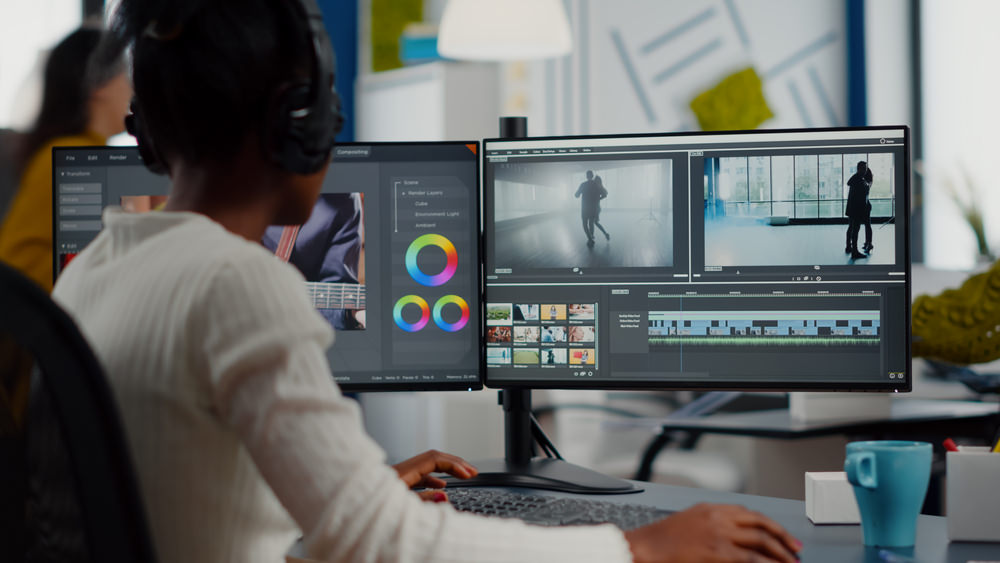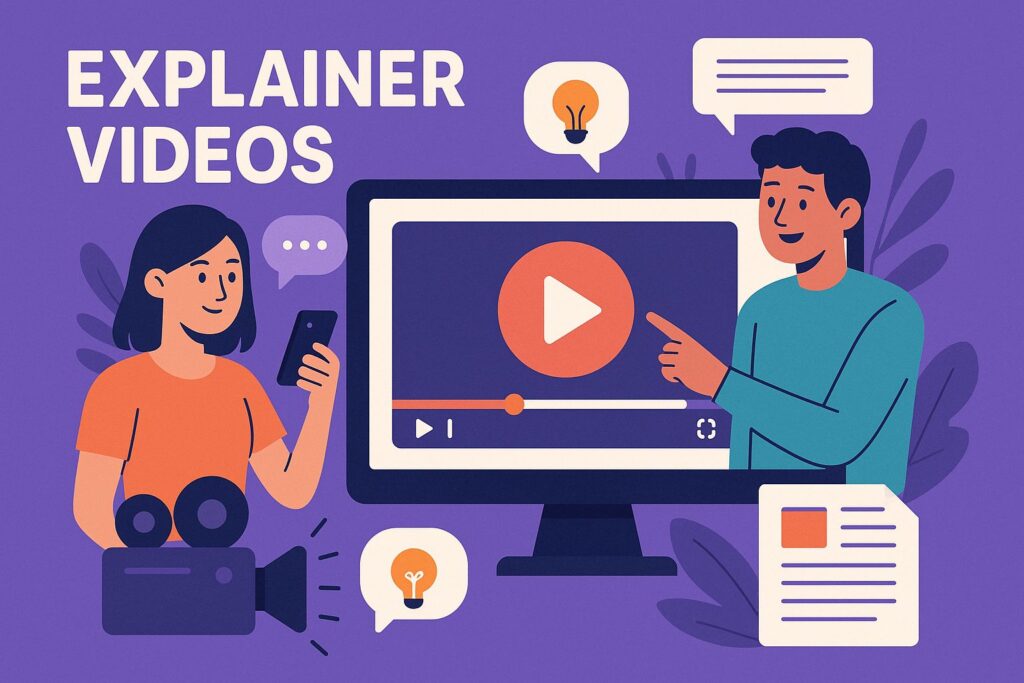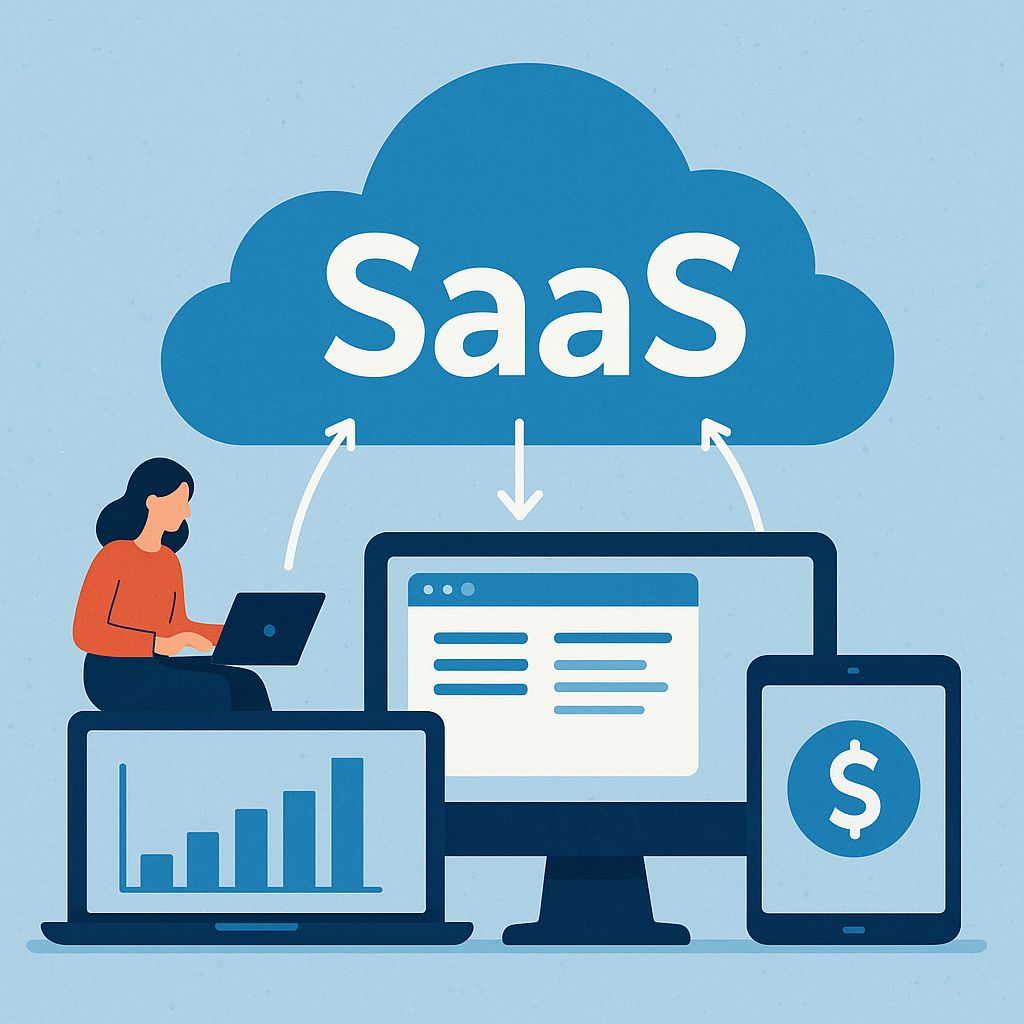Key Takeaways
- Explainer videos can increase software conversion rates by up to 80% by simplifying complex features into digestible visual narratives.
- The most effective software explainer videos follow a problem-solution framework and keep content under 2 minutes for optimal viewer engagement.
- Animation-based explainer videos process 60,000x faster in the human brain than text alone, making them ideal for overcoming technical confusion.
- VideoExplainers helps companies transform complex software features into compelling visual stories that drive sales and user adoption.
- Placing explainer videos strategically on landing pages can reduce bounce rates by up to 35% and increase time-on-site metrics.
Software is complex. Explainer videos make it simple. In today’s crowded SaaS marketplace, the difference between a successful product launch and a failed one often comes down to how quickly potential customers understand your value proposition. VideoExplainers specializes in transforming complicated software features into engaging visual stories that drive sales conversions and user adoption.
How Explainer Videos Solve the #1 Problem in Software Sales
The greatest challenge in software sales isn’t competition or pricing—it’s comprehension. When prospects don’t immediately understand how your software solves their problems, they move on. This cognitive friction creates a massive barrier to conversion that traditional marketing materials often fail to overcome.
Explainer videos bridge this comprehension gap by combining visual storytelling, concise narration, and strategic simplification. Rather than overwhelming prospects with feature lists or technical specifications, these videos create an emotional and intellectual pathway to understanding. They transform abstract concepts into concrete benefits through visual metaphors and relatable scenarios.
Studies show that viewers retain 95% of a message when watching it in video format compared to just 10% when reading text. For software companies, this retention differential can dramatically accelerate the sales cycle and reduce the support burden after purchase. Wistia’s research indicates that companies using explainer videos on their landing pages see conversion improvements of 20-80% compared to those without video content.
The 4 Types of Explainer Videos That Drive Software Sales
Not all explainer videos serve the same purpose in your marketing funnel. The most successful software companies deploy different video types strategically throughout the customer journey. Each type addresses specific customer needs and questions at various decision points. Discover how to boost sales with custom animated explainer videos to enhance your software marketing strategy.
1. Problem-Solution Videos (60-90 seconds)
These foundational videos establish the “why” behind your software. They begin by acknowledging a specific pain point your target audience experiences, amplify the frustration associated with this problem, then introduce your software as the elegant solution. The narrative arc follows a clear before/after structure that helps prospects envision life with your product.
Problem-solution videos work best at the top of your marketing funnel, typically on homepage headers or in initial outreach campaigns. They focus more on emotional connection than technical details, making them perfect for introducing your software to new prospects who may not even realize they need a solution.
“Our conversion rate jumped 45% after adding a problem-solution explainer to our homepage. The video helped prospects self-identify with the problems we solve before they even saw pricing.” — Sarah Chen, CMO at TaskFlow
2. Feature Spotlight Videos (30-45 seconds)
Once prospects understand the general value of your software, feature spotlight videos dive deeper into specific functionality. These brief, focused videos highlight individual features that differentiate your product from competitors. They answer the crucial “how” questions that arise during the consideration phase of the buying journey.
Effective feature spotlights maintain a strict benefits-first approach, explaining the “so what” behind each feature rather than just demonstrating functionality. They work best embedded within product pages, email sequences, or as part of a demo library that prospects can browse according to their specific interests.
3. How-To Tutorials (2-3 minutes)
These instructional videos move beyond marketing to serve as functional onboarding tools. They provide clear, step-by-step guidance on specific software processes, helping both prospects evaluating the product and new users getting started. While longer than other explainer formats, how-to videos maintain engagement through practical value and problem-solving orientation.
Tutorial videos significantly reduce support tickets and customer frustration during the critical early adoption phase. They also serve as powerful pre-sale tools by demonstrating the intuitive nature of your interface and giving prospects confidence they’ll be able to successfully implement your solution.
The best tutorial videos maintain the same visual language and branding as your marketing explainers, creating a cohesive experience from consideration through onboarding. They anticipate common user questions and address them proactively through clear visual demonstrations.
4. Customer Success Stories (1-2 minutes)
These narrative-driven videos combine the power of testimonials with the clarity of explainer videos. They showcase real customers describing specific problems your software solved for them, with animated visualizations that reinforce key points. Success story explainers provide social proof while simultaneously educating viewers about product applications.
Unlike traditional customer testimonial videos, animated success stories allow you to visually represent the results and benefits achieved, making abstract concepts like “time savings” or “efficiency gains” concrete through visual metaphors and data visualization. They’re particularly effective in industries where customers may be reluctant to appear on camera or where results are difficult to film conventionally. Learn how to boost sales with custom animated explainer videos.

7 Elements That Make Explainer Videos Convert Viewers to Customers
The difference between a video that entertains and one that drives action comes down to strategic execution. After analyzing thousands of successful software explainer videos, clear patterns emerge in those that consistently convert viewers into customers. These seven elements form the foundation of high-performing explainer videos that deliver measurable ROI.
1. Hook Viewers in the First 8 Seconds
Research shows that 20% of viewers abandon videos within 10 seconds if not immediately engaged. Effective software explainers open with a provocative question, startling statistic, or clear articulation of the problem that creates immediate resonance. This pattern interruption captures attention in a world of endless distractions and signals to viewers that what follows will be worth their time.
The most successful hooks establish an emotional connection before introducing any product details. They focus on the viewer’s experience, not the software itself. For example, “What if you never had to manually update your security protocols again?” creates more engagement than “Our software automates security updates.”
2. Focus on Benefits, Not Features
Technical features mean nothing without context. Effective explainer videos translate each feature into a tangible benefit that viewers can visualize in their daily workflow. Rather than explaining how your API integration works, show how it saves users 3 hours every week.
This benefits-first approach addresses the fundamental question in every viewer’s mind: “What’s in it for me?” When benefits drive the narrative, technical details become supporting evidence rather than the focus. This subtle shift dramatically increases engagement among non-technical decision-makers who influence purchasing decisions.
3. Use Simple, Jargon-Free Language
The paradox of software explainer videos is that they often explain complex products yet must do so in remarkably simple language. Effective scripts eliminate industry jargon and technical terminology in favor of conversational language that resonates with both technical and non-technical audiences. This approachability doesn’t oversimplify the product’s value—it amplifies it by making benefits universally understood.
When technical terminology is unavoidable, the best explainer videos provide visual context that clarifies meaning. Animation becomes a powerful ally, creating visual metaphors that make abstract concepts concrete. For example, rather than explaining “asynchronous communication protocols,” animation might show messages flowing between systems at different times with a simple visual metaphor.
4. Include a Clear Problem-Solution Framework
The human brain is wired for story, particularly the tension-resolution pattern. Effective explainer videos harness this by establishing a clear before/after narrative. The “before” scenario validates the viewer’s current challenges, creating recognition and trust. The “after” scenario presents your software as the bridge between frustration and relief.
This framework creates emotional investment before introducing logical arguments. When viewers see their own struggles represented, they’re more receptive to your solution. This narrative structure also simplifies complex offerings by anchoring features to specific problems they solve rather than presenting them as an overwhelming list.
5. Add Emotional Connection Through Characters
Abstract software becomes relatable through character-driven narratives. The most effective explainer videos feature representative characters that embody your target users, their challenges, and their transformation after adopting your solution. These characters don’t need to be complex—even simple animated avatars create an emotional entry point that raw interface demonstrations cannot match.
Characters also provide consistent visual anchors throughout the video, giving viewers someone to identify with as complex information is presented. This identification triggers mirror neurons in the brain, allowing viewers to essentially “experience” the solution through the character’s journey. Software companies that leverage this psychological principle see significantly higher conversion rates from their videos.
6. Keep Videos Under 2 Minutes
Attention spans aren’t shrinking—they’re becoming more selective. The optimal length for conversion-focused software explainer videos is between 60-120 seconds, with completion rates dropping dramatically after the two-minute mark. This constraint forces clarity and precision in messaging, eliminating unnecessary detail that dilutes impact. To learn more about how to convert viewers into customers with explainer videos, explore our detailed guide.
Within this tight timeframe, the most effective structure allocates roughly 15 seconds to establishing the problem, 15 seconds to introducing the solution concept, 60-80 seconds to demonstrating key benefits, and 10-20 seconds for the call to action. This pacing maintains momentum while providing sufficient detail for informed decision-making.
7. End With a Strong, Specific Call to Action
A compelling explainer video that lacks direction at its conclusion wastes conversion potential. High-performing videos close with clear, specific instructions on what viewers should do next. Rather than generic prompts like “contact us,” effective CTAs offer immediate value: “Start your free 14-day trial now” or “Watch a 3-minute demo of the dashboard in action.” This specificity reduces decision fatigue and creates a natural next step in the customer journey. For businesses looking to enhance their strategy, exploring custom videos for mobile apps and SaaS can be a valuable resource.

The Psychology Behind High-Converting Software Explainer Videos
Understanding why explainer videos work requires looking beyond marketing metrics to the fundamental cognitive processes they engage. The human brain processes visual information differently than text, creating unique opportunities to overcome the comprehension barriers that typically slow software sales cycles. By aligning video structure with these psychological principles, companies can dramatically improve conversion rates.
Why the Brain Processes Visual Information 60,000x Faster Than Text
The human brain processes images in as little as 13 milliseconds—significantly faster than text comprehension. This processing difference creates a massive efficiency advantage for visual content, particularly when explaining complex software concepts. While reading technical specifications requires sequential processing and active cognitive effort, visual demonstrations create instant understanding through parallel processing pathways in the brain.
This visual processing advantage explains why properly constructed explainer videos can condense what would be pages of documentation into seconds of animation. The brain forms a mental model more quickly and retains it more effectively when information comes through visual channels. For software companies, this translates directly to shorter sales cycles and higher conversion rates as comprehension barriers dissolve.
How Motion Graphics Bypass Logical Resistance to Sales Messages
Traditional marketing claims trigger skepticism and logical evaluation. Animation, however, activates different neural pathways that are less associated with critical analysis and more connected to narrative engagement. This subtle difference allows explainer videos to communicate benefits in ways that bypass initial resistance, creating receptivity before analytical evaluation begins.
Motion graphics also leverage the orienting response—an involuntary attention reaction to movement that evolved as a survival mechanism. This instinctive focus on movement helps explainer videos maintain attention through complex explanations that might otherwise lose viewer interest. The combination of decreased skepticism and increased attention creates the perfect conditions for message retention and persuasion.
The most effective software explainer videos deliberately capitalize on these psychological principles, using movement to highlight key benefits at precisely the moments when viewer attention might otherwise wane. This synchronization between content importance and visual emphasis dramatically increases retention of critical selling points.
Real Numbers: The ROI of Explainer Videos for SaaS Companies
Investment in explainer videos must be justified by measurable returns. Fortunately, the data strongly supports their effectiveness. SaaS companies implementing quality explainer videos see measurable improvements across multiple performance indicators that directly impact revenue and growth metrics.
Let’s examine the concrete ROI that well-executed explainer videos deliver for software companies across different stages of growth and market positions.
How Dropbox Gained 10 Million Users With a Single Explainer Video
Perhaps the most famous case study in software explainer video history is Dropbox’s legendary 2009 video. This simple 2-minute explainer used stick figures and straightforward animation to demonstrate the problem of file synchronization and how Dropbox solved it. The result? It drove 10 million new users from a homepage placement, helping propel Dropbox from startup to tech giant.
What made this video particularly effective was its reliance on relatable scenarios rather than technical explanations. Instead of discussing cloud architecture or sync protocols, the video showed a traveler forgetting his files, then demonstrated how Dropbox made this problem obsolete. This problem-first approach connected emotionally before introducing the solution, creating immediate viewer investment.
Conversion Rate Comparison: Landing Pages With vs. Without Videos
A/B testing consistently reveals significant conversion advantages for landing pages featuring explainer videos. EyeView Digital reports conversion rate increases averaging 80% when integrating explainer videos on software landing pages. This dramatic lift occurs because videos address the primary barrier to software purchases: understanding what the product actually does and how it solves specific problems.
The conversion impact is even more pronounced for complex software products. Enterprise-level solutions with multiple features and use cases see conversion improvements of 105-140% when using segmented explainer videos that address different user personas and their specific challenges. This personalization allows prospects to self-identify with scenarios most relevant to their needs.
|
Software Category |
Avg. Conversion Without Video |
Avg. Conversion With Video |
Improvement |
|---|---|---|---|
|
Project Management |
2.3% |
4.1% |
78% |
|
Marketing Automation |
1.9% |
3.8% |
100% |
|
Security Solutions |
1.5% |
3.6% |
140% |
|
Customer Support |
2.6% |
4.5% |
73% |
Average Cost Breakdown for Professional Production
Production costs for professional software explainer videos typically range from $3,000 to $20,000 depending on length, animation complexity, and production company reputation. This investment breaks down across several key components, with script development and animation typically consuming the largest portions of the budget.
When calculating ROI, companies must consider not just direct conversion improvements but also reduced support costs, shortened sales cycles, and increased customer lifetime value through better product understanding. A properly budgeted explainer video typically recovers its costs within 3-6 months through these combined benefits, with continued returns extending years beyond the initial investment.

DIY vs. Professional Production: Making the Right Choice
With accessible animation tools and template-based platforms promising quick results, many software companies face the decision between in-house production and professional services. This choice involves tradeoffs between cost, quality, time investment, and ultimately, conversion effectiveness.
When to Create In-House Videos (And When Not To)
DIY production makes sense for time-sensitive tutorial videos, feature updates, or internal training content where production values are less critical than timely information delivery. Companies with established design teams and clear messaging may successfully produce simpler explainer formats in-house, particularly when brand guidelines are well-developed and creative resources have bandwidth.
However, cornerstone marketing videos—especially those for homepage placement or primary lead generation—almost always deliver better ROI when professionally produced. The expertise gap in scriptwriting, pacing, animation technique, and conversion psychology typically results in amateur elements that undermine credibility precisely when you need to establish it most. The difference in conversion rates between professional and amateur videos (often 30-50%) quickly outweighs the initial production cost savings.
Essential Equipment for Quality DIY Production
Companies committed to in-house production should invest in proper equipment and software to achieve acceptable quality. At minimum, this includes professional audio recording equipment (not built-in computer microphones), animation software beyond basic presentation tools, and dedicated video editing software. The audio quality differential between amateur and professional narration is immediately noticeable to viewers and directly impacts perceived product quality.
Beyond equipment, allocate sufficient time for script refinement and testing. The most common DIY mistake is rushing production without validating the script with target users. Even a modest investment in script testing can dramatically improve video performance by identifying confusing concepts or missed connection points before animation begins.
How to Evaluate Video Production Companies
When selecting a production partner, look beyond portfolio aesthetics to understand their process for developing messaging strategy. The best production companies begin with audience analysis and problem definition rather than jumping straight to visual concepts. Request case studies with specific conversion metrics rather than just visual samples.
Ask potential partners about their script development methodology specifically for software products. Experienced studios will describe a clear process for translating technical features into benefit-focused messaging and can provide examples of how they’ve simplified complex concepts for previous clients. Their process should include multiple revision stages for the script before animation begins, as changes become exponentially more expensive once visual production starts.
Price Ranges and What They Actually Get You
Understanding what drives cost differences helps make informed investment decisions. Entry-level professional videos ($3,000-$7,000) typically feature template-based animation with customization, standard voice talent, and limited revisions. Mid-tier productions ($7,000-$12,000) offer custom animation, premium voice talent, and more collaborative script development. Premium productions ($12,000-$20,000+) provide completely custom animation, extensive script development with audience testing, and specialized animation techniques.
The primary differentiator in these price tiers isn’t visual polish but strategic development. Higher-priced services invest significantly more time in understanding your audience, testing messaging concepts, and refining the script before animation begins. This front-loaded strategy work typically delivers substantially better conversion results that justify the increased investment for companies with adequate traffic volume.

The 5-Step Process to Create Your First Software Explainer Video
Whether working with an agency or producing in-house, understanding the complete production process helps ensure quality outcomes and appropriate resource allocation. Successful explainer videos follow a structured development path that prioritizes strategy before execution.
1. Script Development: The 7-Part Formula That Works
The script forms the foundation of every successful explainer video. High-converting software scripts follow a consistent structure: hook (8-10 seconds), problem statement (15-20 seconds), solution introduction (10-15 seconds), key benefits (30-40 seconds), feature demonstration (20-30 seconds), credibility proof (10-15 seconds), and call to action (10 seconds). This formula maintains viewer engagement while delivering sufficient information for decision-making.
The most effective scripts begin by articulating the problem more clearly than prospects could themselves. This “you understand me” moment creates trust and receptivity before introducing your solution. Use the actual language your customers use when describing their challenges—not your internal terminology—by incorporating phrases from support tickets, sales calls, and user interviews into your script.
2. Storyboarding Your Video Scene by Scene
Storyboards translate script concepts into visual sequences, identifying key moments that require animation emphasis. Effective storyboarding matches visual complexity to conceptual complexity—simplifying visuals during complex explanations and using more detailed animation during simpler narrative sections. This counterbalancing helps maintain cognitive load at optimal levels throughout the video.
3. Choosing Voice Talent That Matches Your Brand
Voice selection significantly impacts how viewers perceive your software’s personality and credibility. Enterprise security solutions benefit from authoritative, trust-inspiring voices, while creative tools connect better with energetic, approachable narration. The narrator essentially becomes your brand’s proxy, so their tone should align with your brand attributes. For more insights, consider exploring how to convert viewers into customers with the right explainer videos.
Beyond tone matching, ensure your narrator can properly pronounce industry-specific terminology. Request sample readings of your most technical terms before committing to a voice artist. Regional accents should be considered based on your primary market—familiar accents increase trust, while international audiences often respond best to neutral accents without strong regional characteristics.
4. Animation Style Selection Based on Your Target Audience
Animation style communicates as much about your brand as the content itself. B2B enterprise software typically benefits from clean, minimalist animation with subtle motion and professional color schemes. Creative tools and consumer applications often perform better with more playful, character-driven animation that emphasizes emotional benefits alongside functional ones.
Match animation complexity to your audience’s visual sophistication and your software’s positioning. Premium enterprise solutions with high price points justify more custom, sophisticated animation that signals quality and attention to detail. Products targeting non-technical users benefit from friendly, approachable animation styles that reduce perception of complexity.
5. Distribution Strategy Across Multiple Platforms
Even the best explainer video fails without proper distribution. Develop a multi-channel strategy that includes homepage placement, dedicated landing pages, email campaigns, social platforms, and sales enablement tools. Each platform may require format adjustments—shorter cuts for social media, annotated versions for sales teams, or extended tutorials for post-purchase onboarding.

Maximize Video Impact: Placement Strategies That Drive Conversions
Strategic video placement dramatically affects performance metrics. The same explainer video can deliver vastly different results depending on where and how it’s presented within your marketing ecosystem. Optimizing placement requires understanding both technical implementation and user journey mapping.
The most successful software companies develop a video ecosystem rather than relying on a single explainer. This ecosystem includes top-of-funnel videos for awareness, mid-funnel videos addressing specific objections, and bottom-funnel videos that facilitate purchase decisions. Each placement requires specific optimization for maximum effectiveness. To learn more about enhancing your sales strategy, check out how to boost sales with custom animated explainer videos.
Homepage Placement: Above-the-Fold Considerations
Homepage videos deliver maximum impact when placed above the fold with clear visual priority. Testing consistently shows that center-aligned videos with custom thumbnails outperform sidebar placements by 30-45%. The thumbnail should feature a question or problem statement rather than a product image to trigger curiosity and problem recognition. For more insights, check out our guide on converting viewers into customers.
Size matters for engagement metrics. Videos embedded at less than 400px width see dramatically lower play rates than those presented at 600px or larger. For mobile optimization, ensure your video maintains prominent positioning rather than being relegated to a carousel or below-fold position where visibility plummets. To further enhance your video strategy, consider using custom animated explainer videos to boost engagement and sales.
Email Marketing Integration Techniques
Email campaigns featuring explainer videos see click-through improvements of 65% compared to non-video emails, according to Campaign Monitor data. However, most email clients don’t support direct video playback, requiring strategic workarounds for maximum effectiveness.
The most effective approach uses animated GIF thumbnails that simulate video playback for 2-3 seconds before freezing on a frame with a prominent play button. This creates the impression of video functionality while actually linking to a landing page optimized for conversion around the video content.
Subject lines should explicitly mention video content (“2-Minute Video: Solving Your [Problem]”) as this typically increases open rates by 19%. For maximum impact, create dedicated landing pages for email-driven video traffic rather than sending viewers to general pages where contextual relevance may be lower.
Segment your email distribution to match specific explainer videos with the most relevant audience segments. Personalized video recommendations based on previous interactions deliver 3x higher engagement than generic video promotions to your entire list.
“We split-tested identical offers with and without the explainer video thumbnail in our emails. The video version generated 127% more qualified leads despite having the exact same offer and destination page.” — Michael Brenner, VP Marketing at ServiceNow
Social Media Platform-Specific Optimizations
Each social platform requires specific technical and content adaptations for maximum video performance. LinkedIn favors professional, benefit-focused content with captions, as 80% of business video is watched without sound. Facebook rewards videos that drive early engagement, making the first three seconds critical. Twitter requires punchier, shorter cuts that deliver value even in abbreviated viewing sessions. Understanding these platform differences allows you to adapt your core explainer into formats optimized for each distribution channel. For effective animated business videos for social media campaigns, it’s crucial to tailor your content accordingly.
Turn Viewers Into Customers Today
Explainer videos bridge the critical gap between software complexity and customer understanding, transforming features into benefits and confusion into clarity. By implementing the strategies outlined in this guide, you’ll create videos that don’t just explain your software—they sell it by making its value immediately apparent to every viewer. Discover how to convert viewers into customers with the right video strategies.
Frequently Asked Questions
While your core explainer video can serve as the foundation for all channels, optimal performance requires format adaptations for each platform. Create your comprehensive version (typically 90-120 seconds) for your website, then develop shorter cuts (30-60 seconds) for social media, sales enablement versions with pause points for representatives, and potentially extended versions for detailed product pages. Each adaptation should maintain consistent messaging while optimizing for the specific context where it will be viewed.
The most successful approach treats your primary explainer as a source video from which you can derive multiple versions optimized for specific contexts and audiences. This modular approach maximizes your production investment while ensuring optimal performance across all channels.
VideoExplainers helps software companies transform technical features into compelling visual stories that drive sales and user adoption. Our specialized approach to software explanation has helped hundreds of SaaS companies clarify their value proposition and accelerate their sales cycle.
Q: How long should my software explainer video be?
Q: What’s the average cost to produce a professional explainer video?
Q: Can I use the same explainer video across all my marketing channels?
The most successful approach treats your primary explainer as a source video from which you can derive multiple versions optimized for specific contexts and audiences. This modular approach maximizes your production investment while ensuring optimal performance across all channels.
VideoExplainers helps software companies transform technical features into compelling visual stories that drive sales and user adoption. Our specialized approach to software explanation has helped hundreds of SaaS companies clarify their value proposition and accelerate their sales cycle.





